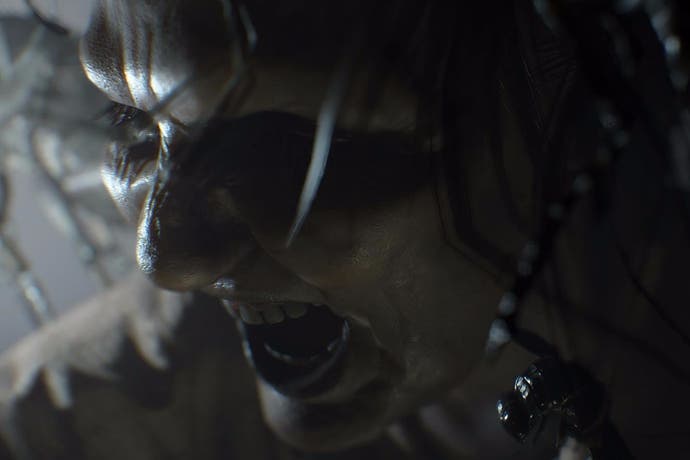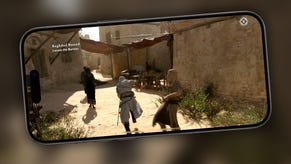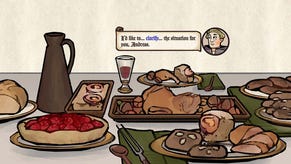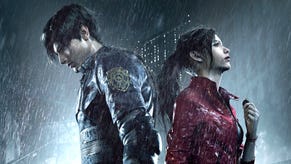What I think after five hours of Resident Evil 7
No Chris, no Jill, no Wesker - just pure survival horror.
Perhaps it was the shark-jumping boulder punching that did it. "Resident Evil 5 was, for me, a big step towards being able to develop something like Resident Evil 7," says Jun Takeuchi, executive producer of the latest Resident Evil game.
"At the time, we were putting forward Chris as the main character. It was the first time you'd seen him in a while and he had to be made into this big hero. I realised, in retrospect, the process of developing Chris into a hero character is not the same process of developing a Resident Evil game.
"It could be a little bit of a parallel track. I think we made a great game and people enjoyed it, we were able to marry the concept of co-op action and survival horror as best we could, but I do think there was more we could have done to make it moment-to-moment scarier.
"The fear of what's around the next corner or the fear of being left alone - I do think back and I'm like, we made Chris into a hero so successfully that we probably - it's like a zero sum thing; the more you get of one, the less you get of the other. Thinking back on that, Chris taught me a lot about what I needed to do next with the series, and that's been able to be translated into what you've seen today with Resident Evil 7."
What I saw and played that day was five hours of Resident Evil 7 in Capcom's central offices in Osaka, Japan, taking in the game's early stages and meeting some of its major antagonists. And honestly, it's the most Resident Evil game I've played in a long time.
It's easy to fixate on the first-person perspective, on the virtual reality and on the lack of recognisable characters, but for all that, Resident Evil 7 still feels like a true old-school title. It feels like survival horror.
And though, sure, what Resident Evil means to people has changed over the years, with some embracing its shift towards action and co-operative gameplay, the series' roots are embedded in survival horror.
"When we started development on Resident Evil 7, we did kind of list up all the core experiences that we personally felt really makes a Resident Evil title," says director Kōshi Nakanishi. "Not knowing what's in the next room, for example, being a little bit scared when opening a door, knowing that I'm pretty sure there's a jump scare ahead but I don't want to take a step forward, having a lack of ammo, figuring out, when am I going to use this, how do I optimise this, trying to figure out item management; we definitely had a huge list of things that we had to figure out how to prioritise."
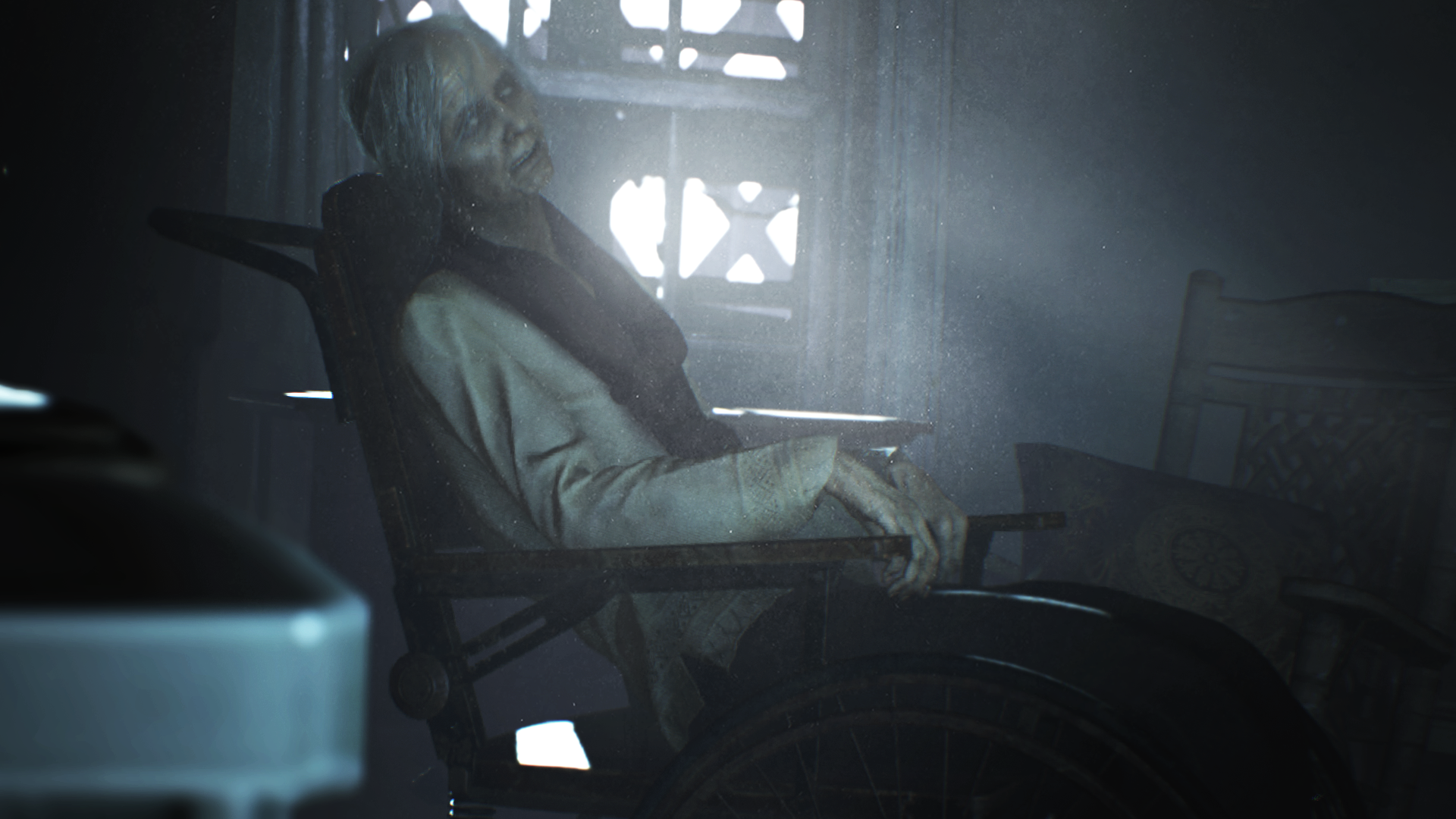
Resident Evil 7 wants to bring it all back to where it began - not to the Spencer Mansion, but back to a time when players felt utterly vulnerable in the face of almost overwhelming odds. You don't play as a gun-toting police officer or a badass special agent, but a guy woefully unprepared and ill-equipped to deal with the situation he suddenly finds himself in.
Ethan wakes up during our demo strapped to a chair and at the mercy of the Baker family, a psychotic collection of oddballs and murderers with Southern drawls on their tongue and literal skeletons in their closet. They own a plot of land housing a small compound of buildings smack-bang in the middle of a swamp, and it's here that the entirety of our play session - and perhaps the entire game - takes place.
There's physically imposing father Jack, screeching mother Marguerite and unhinged yokel son Lucas, and from the moment we begin playing until the end of the session five hours later, they are the only people we square up against - almost. Gone are the endless hordes of zombies from previous titles - this time Capcom is focusing on fewer enemies, and making each count.
"In terms of creating the adversaries, what we really wanted to strive for was thinking, what if we were to meet a monster in real life? What would they be like? And if you were to meet a monster in real life, it would be a terrifying experience even if it's a one-on-one encounter," says scenario director Morimasa Sato.
It is a terrifying experience, not least because during the early stages of the game, you're unarmed. Even after you manage to grab a gun, it isn't the Get out of Jail Free card you hope it'd be. Stealth, and the multitude of hidden passageways and crawlspaces dotted around the Baker compound, are your best hope for survival, and though it seems like the easiest thing in the world to compare this new sneaking-focused set-up to games like Alien: Isolation or Amnesia, the difference is that being spotted by your pursuer here doesn't guarantee death.

Jack in particular is a paralysingly scary presence; like the T1000 or, more aptly, Resident Evil 3's Nemesis, he doesn't immediately come running for you, but instead walks at a slow pace, dragging his shovel with him. If he catches up, he likes to toy with you at first, throwing you around the room and literally daring you to fight back. Of course, the smarter option, always, is to run.
"We felt that as Resident Evil progressed, the enemies were more frequent, more abundant, and at the same time it almost lessened them, almost cheapened the feel of each encounter," says Nakanishi. "We looked back and thought, what is a Resident Evil adversary all about? What do those encounters mean? At the end of the day, each adversary should represent a fear. Something that means when you encounter them you are scared. At the same time, because you're scared, when you do overcome them you feel a greater sense of triumph, so that's definitely something that we were trying to strive for."
This is what Takeuchi means when he talks about how making Chris into a hero character was counter-productive to letting players experience fear. Chris was armed to the teeth. Chris was a trained professional. Chris had seen it all before. By the time Resident Evil 6 rolled around, Chris didn't show fear anymore - so why should the player?
Ethan, however, is all alone and without back-up, without any idea what BOW or STARS or BSAA means. All he knows is there is some freaky shit going down, and he wants out. "It's the same world," says Takeuchi. "It's not a reboot, but you're getting a fresh perspective on the same universe through new eyes. I think of it as a macro to micro shift, because the scale of global bio-terrorism events from the previous games is so massive that there's almost nowhere bigger to go. So by shifting the focus and spotlight on to a single average person in a single house - well, it's more than one building but you know, a single location - I think we really want to give you a chance to see that.
"But at the same time, it's not like the game opens with a scene where all the existing characters are killed in an explosion or something. In my mind they are out there, doing their own thing, running and gunning, and in the meantime this also happened in the Resident Evil world. It's a fresh perspective on an existing fiction."
The connections between Resident Evil 7 and the previous games were apparent during my playthrough, during which I discovered - among other things - an old discarded photo of the Arklay mountains. As a long-time series fan, you're always on the lookout for these little nods, and the developers are well-aware of it.
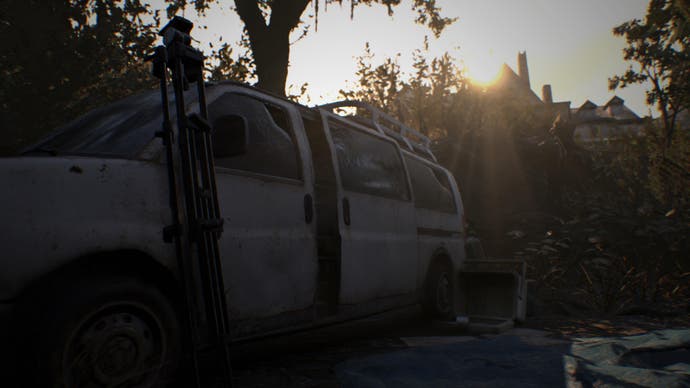
The enemies I feared most in previous Resident Evil games weren't the giant bugs or the mutated Crimsonheads or the scurrying Lickers, they were always the enemies that seemed in no rush to get to you. I was always freaked out by the Regenerators in Resident Evil 4. Something about the snuffling noises they made and the slow, erratic way they walked had me on edge, which is why the Moulded creatures - new opponents in Resident Evil 7 hidden down in the depths of the Bakers' basement - are the stuff of nightmares. They're slow, purposeful, unpredictable and completely gross. Yet crucially the game doesn't overuse them - they were specific to that one section of my playthrough, and once I'd left that area, I didn't encounter them again. The fear never left me though, and I'm sure they'll make another appearance somewhere down the line in the main game.
Ethan isn't totally powerless. By searching his surroundings he's able to craft a variety of items, from first aid to ammunition, from things like chemical solvent, gunpowder, solid fuel and, of course, herbs. But just like Resident Evil titles of old, you don't have the inventory space to carry everything, so some items need to be left behind, to double-back and grab later. You're going to have to gauge how much you really want that shotgun. Is it worth an entire round of enhanced handgun bullets and a weird old coin?
You do have boxes that transfer items from save room to save room, along with tape recorders that replace typewriters as the new method through which to save your game. You'll often find telephones in the vicinity too, as a mysterious stranger calls Ethan at intervals with advice and guidance on getting out of the house alive. This mysterious stranger almost certainly has an ulterior motive for doing so, but as to what it is, who knows.
The location is perhaps my favourite part of Resident Evil 7 so far. You start off in a creaking old house that genuinely feels lived in, with trash bags and garbage piled up high in the corners and dirt and grease caking the walls. It's gross but it's almost reassuringly human; in one of the central hub rooms there's a mouldy old piece of toast in pride of place on the table. But the more you explore the homestead, the more labyrinthine and surreal it seems to become, so that when you encounter the kind of puzzles and door locks the series is known for, they feel like the twisted will of the people and things that inhabit the Baker estate (though that doesn't stop Ethan from commenting, incredulously, "who the hell makes all these?!").
"It almost feels like this time around we were able to achieve the ideal image of what Resident Evil 1 could be," producer Masachika Kawata tells me. "Given that you have all these photo-realistic environments and you're able to traverse through them with a first-person perspective, having that level of immersion, with all the latest technology, it was kind of cool to be able to be like, here's that very, very original concept from the very beginning, and we're able to take that vision and really apply it."
The obstacles you'll encounter vary from tracking down keys to solving puzzles, displaying the devilish tricksiness of the early Resident Evil games where you'd have to think outside the box and examine something from all angles, often literally, to uncover the way forward.
"One of the things that ended up getting scrapped was, there was an idea to have the player cook some popcorn with the kind of aluminium foil thing, where the aluminium expands," lead game designer Hajime Horiuchi explains, complete with miming actions, "and it would pop and there would be a key there. But then we thought that foreigners wouldn't understand that concept, so we ended up scrapping it."
He mentions the film Scream, and I assure him that many would definitely have understood the concept. "It's a shock to know you guys understand that reference, we should put it back in! I feel a little bit better now," he replied. It's this inventiveness and dark sense of humour that I've missed from the recent Resident Evil games, and it feels like this time, the team want to have fun and get a little bit creative.
Nowhere is that more apparent than in the VHS tape segments; short standalone sections that switch up the gameplay. You play these sections by finding the tapes hidden throughout the household and loading them onto a video player, whereupon you assume the role of another victim of the Baker family. These pieces are clever because they give additional insights into the family members, show previews of new sections of the house, and focus on specific elements of both new and old Resident Evil gameplay, like puzzle-solving or sneaking.
Best of all, they feature expendable characters, so you have no idea what could happen around the next corner. "It was a very fun and liberating experience for us," Sato nods.
"Not to take away from the main scenario - it's always exciting to be working on a longer piece and trying to build on what's already there - but in terms of the found footage tapes, we approached them as stand-alone, horror pieces where we were able to try something new. We were able to go outside the boundaries of the main story campaign and try out not only different types of gameplay, but we were able to offer, on a narrative level, a different perspective, a different personality. These were all things that we had a little more liberty to work with. it was a different, more exciting take on what we were used to doing. And considering this time around you're going from a first-person to a third-person perspective, we were able to draw inspirations from more of those VHS type movies like Blair Witch Project and Cloverfield. Those types of horror movies have gotten popular over the years. so it was cool to be able to give our own take on that hand-camcorder feel."

So if there's no Chris, no Jill, no Wesker, no Umbrella, no glowing orange weak spots and no arsenal of weapons, what is there? Genuinely the best Resident Evil experience I've had in a long time, one where I was scared and challenged, surprised by what I uncovered and intrigued to find out more.
It might look different on the surface, but everything that made classic Resident Evil so great, for me, is present in Resident Evil 7 - uniquely weird puzzles, a foreboding atmosphere, a memorable locale and genuinely intimidating enemies. It isn't action horror or horror entertainment - it's real, classic survival horror.
"Hearing what we're doing, you might be concerned about the direction Resident Evil is taking," Takeuchi concedes. "But when you try it and see it running, it's definitely Resident Evil. We get the same concerns on the team; once we made the decision and the progression from fixed camera angle to third-person camera to first-person camera was our next step, there were members of the team who were like, well will it still be Resident Evil? How are we going to make it scary? How is the game going to work?
"I had faith in the direction, so I just wanted to say, look, let's make it, make an internal build and we'll make a first playable version, take a look and I think that'll reassure you. And lo and behold, once we had the game up and running and once people could actually get their hands on it, they had a moment of realisation like, it's all OK, we can proceed with this because our concerns were - I'm not going to say invalid, but they weren't justified. As long as we can make the game the way we want to make it, it will still be Resident Evil no matter what the camera angle is."
This article is based on a press event in Japan. Capcom paid for travel and accommodation.
